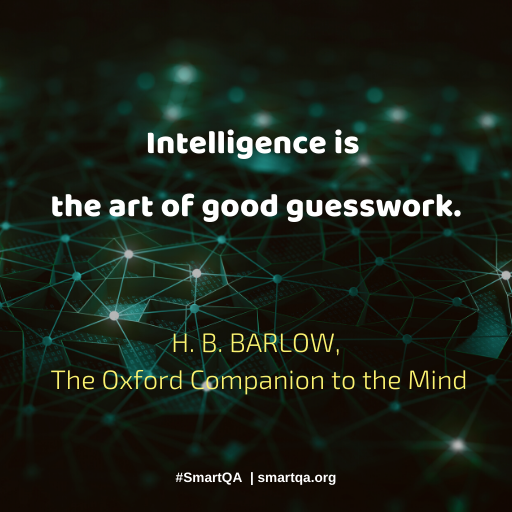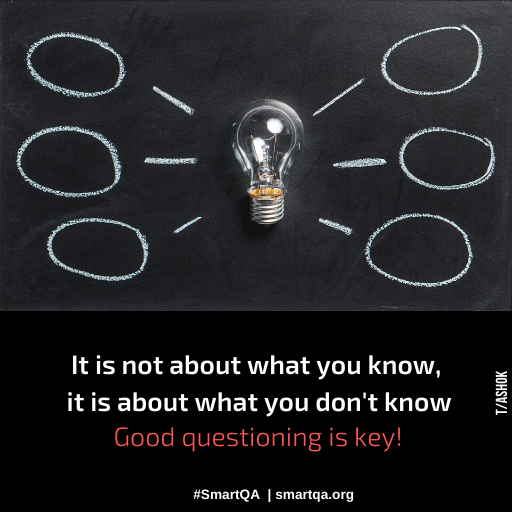SmartQA Digest
What does it take to do SmartQA? How can I do less and accomplish more? What parts of this are human-powered & machine-assisted? It takes a brilliant mindset, intelligent exploration, diligent evaluation, keen observational skills, tech savviness and continual adjustment. It is about being logical yet be creative, it is about being disciplined yet be random, it is about exploring the breadth and depth, it is about understanding deeply and also finding blind spots about being bundled by time but be unlimited/unbounded with the possibilities. Doing SmartQA is about doing mindfully, in a state of brilliant balance, outlined in this crisp article five thoughts on ‘Doing SmartQA’ in the expandMind section.
In this edition of SmartBites, listen to Zulfikar Deen on “Expectations of end users & management from IT team”. In the nanoLearning section Shivaji Raju outlines four key aspects of “What is Digital Testing”.
“A typical accident takes seven consecutive errors” states Malcolm Gladwell, this notion is reflected in Mark Buchanan’s book “Ubiquity”too. The article in the beEnriched section “Seven consecutive errors = A Catastrophe” dwells upon ‘How do you ensure that potential critical failures lurking in systems that have matured can still be uncovered?’
beEnriched

FIVE thoughts on ‘Doing SmartQA’
What does it take to do SmartQA? How can I do less and accomplish more? What parts of this are human-powered & machine-assisted? A short crisp article outlining some thoughts, SIX for now on what it takes to do SmartQA.
expandMind

Black box thinking
Learning from failures .The inside story of how success really happens and how we cannot grow unless we learn from our mistakes.
POSTER


















